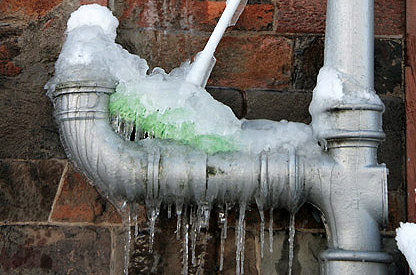Tips for Avoiding Frozen Pipes in Cold Weather: Professional Tips
Tips for Avoiding Frozen Pipes in Cold Weather: Professional Tips
Blog Article
The publisher is making several great annotation relating to 6 Ways to Prevent Frozen Pipes overall in this content following next.

Cold weather can ruin your plumbing, particularly by freezing pipelines. Right here's how to stop it from occurring and what to do if it does.
Introduction
As temperature levels decrease, the threat of icy pipes rises, potentially bring about expensive repair work and water damages. Understanding just how to prevent icy pipes is critical for property owners in cool climates.
Prevention Tips
Protecting vulnerable pipelines
Cover pipes in insulation sleeves or use warm tape to secure them from freezing temperature levels. Concentrate on pipelines in unheated or external locations of the home.
Home heating techniques
Keep interior rooms adequately heated, especially locations with pipes. Open cupboard doors to permit cozy air to flow around pipelines under sinks.
Exactly how to determine frozen pipelines
Try to find lowered water circulation from taps, unusual odors or sounds from pipelines, and visible frost on exposed pipes.
Long-Term Solutions
Architectural modifications
Consider rerouting pipelines far from outside walls or unheated locations. Include extra insulation to attic rooms, basements, and crawl spaces.
Upgrading insulation
Buy premium insulation for pipelines, attic rooms, and walls. Proper insulation aids preserve constant temperatures and minimizes the risk of icy pipes.
Securing Outdoor Plumbing
Yard hoses and outside taps
Disconnect and drain yard hoses before winter months. Install frost-proof spigots or cover exterior taps with insulated caps.
Comprehending Frozen Pipes
What triggers pipelines to freeze?
Pipes ice up when revealed to temperatures below 32 ° F (0 ° C) for expanded periods. As water inside the pipelines ices up, it increases, putting pressure on the pipe walls and potentially causing them to burst.
Risks and damages
Frozen pipes can lead to water disturbances, residential or commercial property damage, and expensive repairs. Ruptured pipelines can flood homes and cause extensive architectural damage.
Indicators of Frozen Water Lines
Determining frozen pipelines early can avoid them from rupturing.
What to Do If Your Pipelines Freeze
Immediate activities to take
If you presume icy pipes, keep taps available to ease stress as the ice melts. Utilize a hairdryer or towels taken in hot water to thaw pipes gradually.
Final thought
Preventing icy pipelines needs proactive procedures and fast actions. By understanding the reasons, signs, and safety nets, homeowners can shield their plumbing during winter.
5 Ways to Prevent Frozen Pipes
Drain Outdoor Faucets and Disconnect Hoses
First, close the shut-off valve that controls the flow of water in the pipe to your outdoor faucet. Then, head outside to disconnect and drain your hose and open the outdoor faucet to allow the water to completely drain out of the line. Turn off the faucet when done. Finally, head back to the shut-off valve and drain the remaining water inside the pipe into a bucket or container. Additionally, if you have a home irrigation system, you should consider hiring an expert to clear the system of water each year.
Insulate Pipes
One of the best and most cost-effective methods for preventing frozen water pipes is to wrap your pipes with insulation. This is especially important for areas in your home that aren’t exposed to heat, such as an attic. We suggest using foam sleeves, which can typically be found at your local hardware store.
Keep Heat Running at 65
Your pipes are located inside your walls, and the temperature there is much colder than the rest of the house. To prevent your pipes from freezing, The Insurance Information Institute suggests that you keep your home heated to at least 65 degrees, even when traveling. You may want to invest in smart devices that can keep an eye on the temperature in your home while you’re away.
Leave Water Dripping
Moving water — even a small trickle — can prevent ice from forming inside your pipes. When freezing temps are imminent, start a drip of water from all faucets that serve exposed pipes. Leaving a few faucets running will also help relieve pressure inside the pipes and help prevent a rupture if the water inside freezes.
Open Cupboard Doors
Warm your kitchen and bathroom pipes by opening cupboards and vanities. You should also leave your interior doors ajar to help warm air circulate evenly throughout your home.
:strip_icc()/snow-outdoor-faucet-pipes-4af65d1e5e904fb1aa7bf74071fe5d89.jpg)
As a keen person who reads on Helpful Tips to Prevent Frozen Pipes this Winter, I think sharing that piece of content was sensible. Enjoyed our blog entry? Please quickly share it. Help others check it out. Thanks a lot for going through it.
Or Book Technician Here Report this page